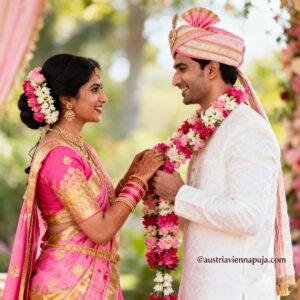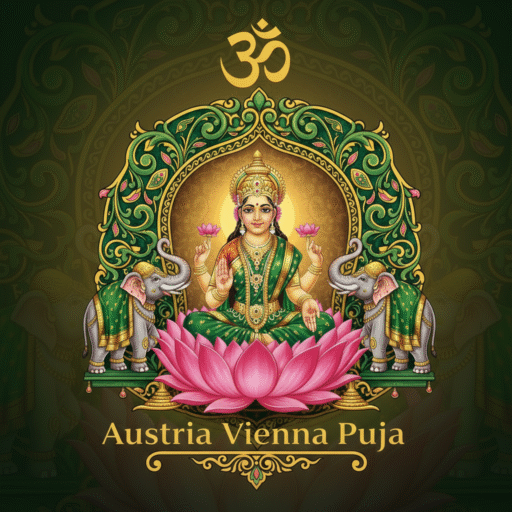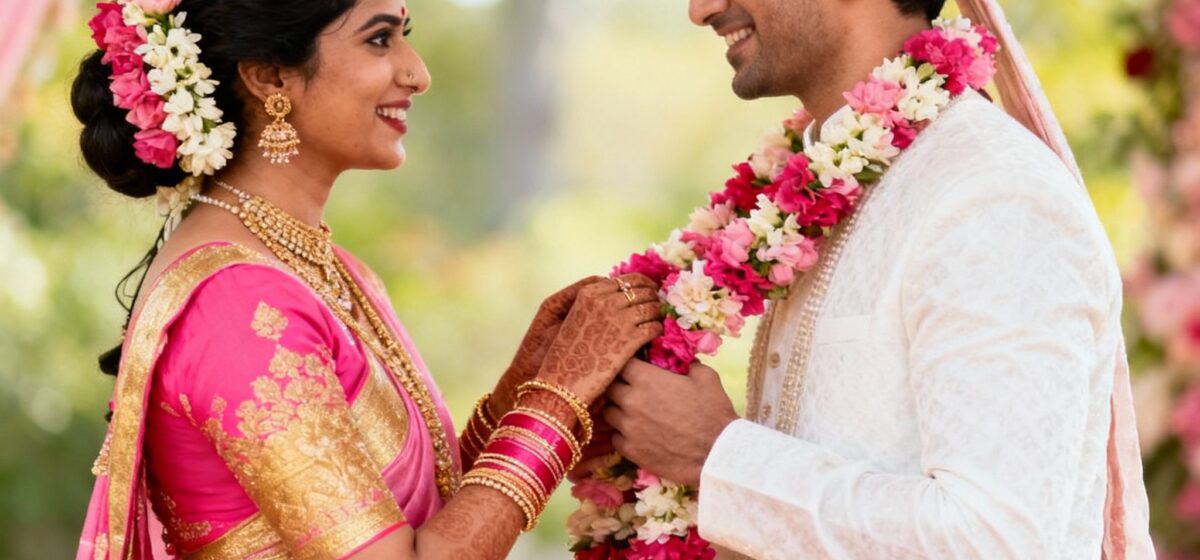Hindu Wedding Ceremonies in Italy | Hindu Splendor with Italian Romance

Hindu Wedding Ceremonies in Italy: A Fusion of Cultures
Cinquecento Meets Choli: An Indian Wedding Road Trip Across Italy
Italy, the land that gave the world opera, Renaissance art, and the slow food movement, offers a vivid stage for Hindu weddings that crave both Vedic grandeur and a taste of romantic dolce vita. Here, century-old vineyards and lakeside villas become backdrops for sacred fire rituals, while the Italian sun infuses every day with old-world warmth and style.
From the opulence of Northern palazzi to the rustic hospitality of Tuscany and the sunbathed coastline of Amalfi, Italy provides a tapestry of possibilities for every wedding style.
Roman Royalty: Eternal City, Eternal Bonds
Rome—the Eternal City—serves up history, drama, and endless venue possibilities. Couples wed under Renaissance frescoes, in gardens once walked by Caesar, or in contemporary rooftop spaces with views spilling over Colosseum domes.
What Makes Rome Unique for Hindu Wedding Ceremonies in Italy:
Grand Renaissance and Baroque palace hire options
Ancient Roman ruins as photo locations
Plentiful luxury hotels for multi-day guest stays
World-class Indian caterers, some flown in from London
Typical Roman weddings feature pre-ceremony processions past fountains and piazzas, drawing curious crowds. Mandaps are erected in marble courtyards, and the city’s famous light turns every garland to gold during evening rituals.
Venice: Floating Rituals, Dreamlike Ceremonies
No other city says “romance” quite like Venice. Imagine your Barat arriving by gondola, accompanied by musicians playing shehnai from bridge arches. Ceremonies take place in palaces overlooking the Grand Canal, and rice-tossing rituals echo off frescoed ceilings.
Venetian Touches:
Marble palazzos become mandap stages
Water taxis transport guests along canals
Reception feasts combine Italian antipasti with Indian thalis
Nighttime ceremonies lit by hundreds of floating candles
Local vendors accustomed to movie productions go above and beyond to engineer elaborate decor, ensuring sacred fire regulations meet city safety codes.
Tuscany: Rustic-Chic Mandap in the Vines
Tuscany epitomizes Italian countryside romance. Couples choose stone villas with cypress-lined approaches, vineyards stretching to the horizon, and infinity pools overlooking sunset-drenched valleys. Weddings spill outdoors: Haldi rituals under olive trees, Sangeet on garden terraces, and fire ceremonies in ancient barns transformed with marigolds and fairy lights.
Tuscan Magic:
Organic farm-to-table banquets with both Indian and Italian vegetarian menus
Wine tastings woven into welcome events (non-alcoholic options respected)
Authentic North and South Indian Priests for tailored ceremonies
Milan & The North: Fashion, Modernity, and Grandeur
Italy’s fashion and business capital delivers contemporary wedding style. Here, industrial chic converted warehouses host Mehendi parties, and luxury hotels provide rooftop spaces for ceremonies with panoramic city views.
Local Indian communities—centered around the Via Melchiorre Gioia area support a thriving South Asian market for flowers, clothing, and ceremony essentials.
Northern Highlights:
Italian design aesthetics fused with traditional Indian decor
DJs blending Bollywood with house and Euro-pop beats
Guest shopping days Milan’s boutiques are irresistible
Amalfi & Southern Shores: Sun, Sea, and Sacred Fire
The South brings wild beauty—ceremonies on cliffs overlooking the Tyrrhenian Sea, mandaps set up beside lemon groves, and Mehendi picnics on private beaches. Many South Indian families choose these venues for their openness, warmth, and sense of adventure.
Regional priests incorporate Southern Indian wedding music (nadaswaram, thavil) and translated Sanskrit mantras into festive processions.
Italian-Indian Culinary Synergy
Italy and India both revere food as celebration. From Milan’s vegetarian risotto to classic Southern Indian idli-sambar, your feast blends local and traditional:
Paneer caprese salad with buffalo mozzarella and basil
Fresh tomato pasta alongside aloo gobi
Cannoli dessert served with cardamom chai
Gelato and Indian sweets at the reception
More Indian chefs are moving to Italy, so vegetarian authenticity and even vegan options are now readily available.
Practical Details and Legalities for Hindu Wedding Ceremonies in Italy
Civil Registration: Catholic churches dominate religious weddings, but Italy is exceptionally open to foreign traditions. Civil registration must be processed with local town hall (“comune”). Most couples handle legal marriage at home, then celebrate in Italy.
Travel & Logistics: Most cities connected by fast trains, Rome/Milan have direct flights from India and major North American/UK hubs.
Local Indian Communities: Rome, Milan, Naples, and Bologna all have established Indian communities—support with stores, priests, and vendors.
Seasonal Tips: April-June and September-October prime months. July/August are busy, expensive, and hot; winter is magical but unpredictable outdoors.
The Poetic Heartbeat: Blessings in Two Languages for Hindu Wedding Ceremonies in Italy
Italy understands poetry, and public declarations of blessing are cherished. Many couples ask their priest to deliver select wedding mantras in both Sanskrit and Italian, allowing elders from both cultures to give heartfelt blessings.
The result? Guests describe ceremonies as “soulful” and “unlike anywhere else.” In Italy, romance and spirituality blend, crafting celebrations guests remember for a lifetime.
Make your wedding a work of Italian-Vedic art start the journey today.
Crafting Your Sacred Hindu Wedding Ceremonies in Italy : A Journey Beyond Borders
A Hindu wedding ceremonies in Italy transcends mere celebration it embodies a profound spiritual bridge connecting millennia of Vedic tradition with the artistic soul of Western Europe. When couples choose to exchange vows beneath Italian skies, they don’t simply select a picturesque venue; they embrace a transformative experience that honors ancestral wisdom while celebrating contemporary love in a setting that speaks the universal language of beauty and devotion.
The true magic of hosting Hindu wedding ceremonies in Italy lies not merely in the stunning backdrops or seamless logistical coordination, though these elements certainly matter. Rather, it emerges from the deliberate fusion of two profound philosophical traditions one rooted in cosmic consciousness and karmic alignment, the other grounded in artistic expression and humanistic celebration. When these worlds collide in a Tuscan vineyard or a Venetian palazzo, something extraordinary crystallizes: a wedding that feels neither wholly Indian nor entirely Italian, but authentically yours.
Throughout your Italian wedding journey, from the moment your Barat procession winds through Roman cobblestone streets to the final exchange of flower garlands beneath Mediterranean stars, you’re participating in a sacred act of cultural synthesis. The Agni (sacred fire) that witnesses your Saptapadi vows burns with the same cosmic consciousness it carried five thousand years ago in ancient Vedic India, yet its glow illuminates faces from continents across the globe. Your grandmother’s Sanskrit mantras echo off Renaissance frescoes. Your cousin’s Bollywood dance happens on a terrace overlooking the same landscapes that inspired Dante and Michelangelo.
This is not cultural appropriation or shallow tourism it’s the deliberate expression of how Hindu values themselves embrace universality and inclusion. The Vedic understanding that divinity permeates all existence, that consciousness transcends geography and time, finds its perfect terrestrial expression when you celebrate matrimony in Italy. The Italian philosophy of dolce vita the sweetness of life aligns naturally with the Hindu principle of ananda (bliss), creating ceremonies that feel spiritually coherent to guests regardless of their faith backgrounds.
For couples preparing their Italian-Vedic wedding, this journey requires thoughtful planning that honors both traditions authentically. Engaging experienced priests who understand Vedic protocols, selecting venues that genuinely accommodate sacred fire ceremonies, and collaborating with local vendors who respect your spiritual intentions ensures that every detail reinforces your wedding’s deeper purpose. The practical considerations civil registration, seasonal timing, travel arrangements—become not obstacles but sacred acts of preparation (Sankalpa) that strengthen your commitment.
The transformation extends beyond the ceremony itself. Guests return home fundamentally changed by witnessing such profound cultural celebration. They carry forward stories of how tradition and modernity, East and West, spirituality and romance can not only coexist but create something transcendent. Your wedding becomes a living testament to humanity’s capacity for beauty when we honor multiple truths simultaneously.
Moreover, the memories you craft in Italy become spiritual anchors for your marriage itself. During challenging moments, you’ll recall standing before the Agni with Italian Renaissance art as witness. You’ll remember your spouse’s expression as morning light transformed your mandap into gold. You’ll hold dear the image of both your families—separated by oceans and cultures—joining hands in celebration of your union beneath foreign stars that shine with the same celestial light that guided your ancestors.
Planning a Hindu wedding ceremonies in Italy is therefore an act of conscious intention-setting for your marriage’s future. It declares that your partnership will be rooted in spiritual truth while remaining open to beauty and joy in all their forms. It signals commitment to honoring heritage while embracing evolution. It’s a solemn promise sealed not just by Vedic ritual, but by the consciousness of a place Italy itself that has spent centuries teaching the world about the marriage of art, spirituality, and human connection.
Begin your Italian-Vedic wedding vision today. Whether you’re contemplating Rome’s eternal grandeur, Venice’s romantic waterways, or Tuscany’s spiritual tranquility, your perfect celebration awaits. Our team at Austria Vienna Puja specializes in orchestrating Hindu wedding ceremonies that weave Vedic authenticity with international elegance. We’ll help you transform Italy’s breathtaking landscapes into the sacred stage for your most cherished life chapter ensuring every ritual, every blessing, every moment reflects both your deepest traditions and your unique love story.
Authoritative Academic Sources
Britannica Resources
https://www.britannica.com/topic/Veda
https://www.britannica.com/topic/Dharma-shastra
https://www.britannica.com/topic/Sanskrit-language
https://www.britannica.com/biography/Panini-Indian-grammarian
https://www.britannica.com/topic/Hinduism/Practice
https://www.britannica.com/topic/Advaita-school-of-Hindu-philosophy
https://www.britannica.com/topic/Vedic-religion
Stanford Encyclopedia
https://plato.stanford.edu/entries/logic-india/
https://plato.stanford.edu/entries/god-ultimates/
Academic Journals & Databases
https://jstor.org
https://pdcnet.org
https://ijhp.bgrfuk.org
Oxford Centre for Hindu Studies
https://ochs.org.uk
https://ochsonline.org
Government & Archive Resources
Research Papers
https://papers.ssrn.com
Educational Institutions
https://vedanet.com
https://vedicscience.net
https://bhishmaiks.org
https://vedicwellnessuniversity.com
Additional Academic Resources
https://ijnrd.org
https://takshila.org.in
https://wisdomlib.org
https://cambridge.org
https://academic.oup.com
https://pmc.ncbi.nlm.nih.gov
Internal Resources for Vedic Knowledge
Visit our comprehensive guide to Vedic rituals and their significance at https://austriaviennapuja.com/vedic-rituals-europe.
Explore our article on the sixteen Samskaras and their spiritual significance at https://austriaviennapuja.com/sixteen-samskaras-guide.
Learn about Muhurat calculation and Vedic astrology at https://austriaviennapuja.com/muhurat-calculation-services.
Discover the regional variations in Hindu wedding traditions at https://austriaviennapuja.com/regional-wedding-traditions.
Explore the meaning and significance of sacred mantras at https://austriaviennapuja.com/sacred-mantras-explanation.

